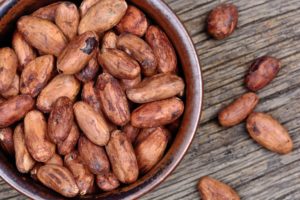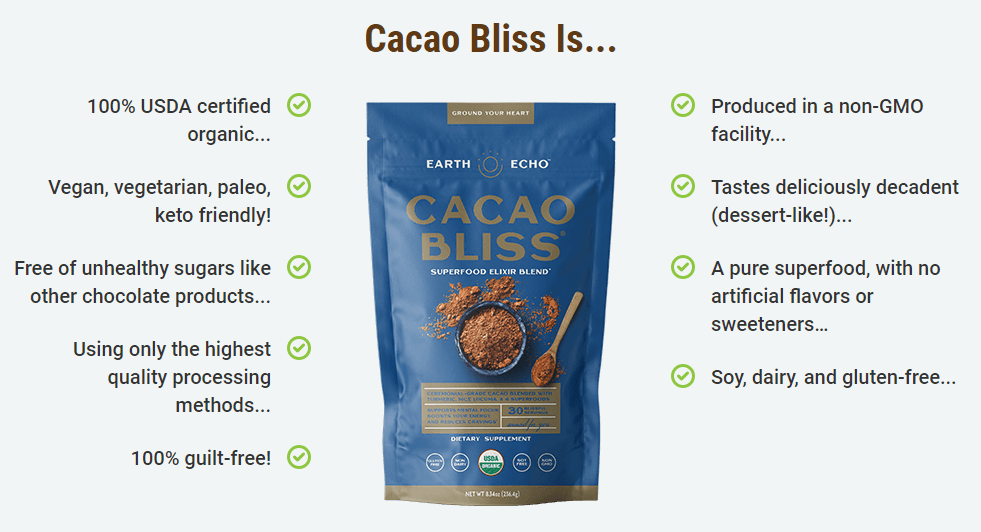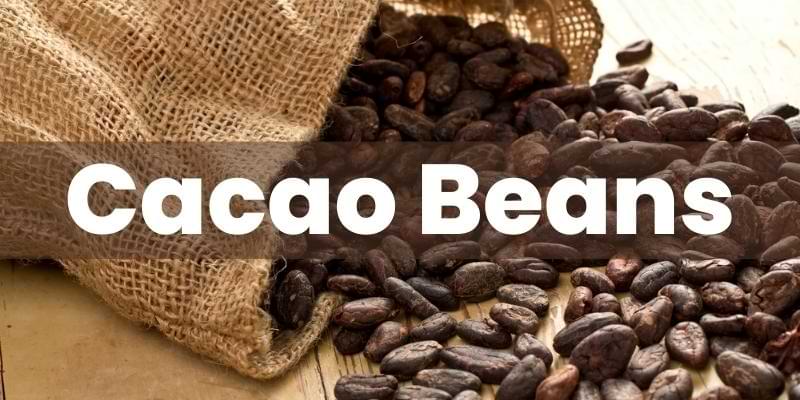According to Wikipedia, the cocoa bean (technically cocoa seed) or simply cocoa (/ˈkoʊ.koʊ/) or cacao (/kəˈkaʊ/), is the dried and fully fermented seed of Theobroma cacao, from which cocoa solids (a mixture of nonfat substances) and cocoa butter (the fat) can be extracted. Cocoa beans are the basis of chocolate, and Mesoamerican foods including tejate, an indigenous Mexican drink that also includes maize.

Interestingly, cocoa beans are technically not beans or legumes, but seeds.
Fitness expert Danette May, who discovered cacao (or chocolate bliss) while on a spiritual sabbatical in Costa Rica, noted that she couldn’t believe the power of this wonderful chocolate called cacao.
“It was one of the most powerful experiences I’ve ever had. I couldn’t believe how good it made me feel.”
Danette May, Cacao Bliss
Cacao: A Natural Superfood
Cacao is one of the most powerful superfoods ever found.
According to a 2011 study, well over 100 uses of cacao for health and wellness support have been documented. As libido booster, a mood enhancer, a powerful antioxidant that protects and supports healthy aging, it would be crazy not to add it to your daily regimine!
The beans that this rare chocolate comes from have over 300 phytochemicals, which are natural plant-based compounds that support health. Cocoa contains more phenolic antioxidants than most foods. According to a report, “Cocoa and Chocolate in Human Health and Disease“:
- The epicatechin content of cocoa is primarily responsible for its favorable impact on vascular endothelium via its effect on both acute and chronic upregulation of nitric oxide production.
- Other cardiovascular effects are mediated through anti-inflammatory effects of cocoa polyphenols, and modulated through the activity of NF-κB.
- Antioxidant effects of cocoa may directly influence insulin resistance and, in turn, reduce risk for diabetes.
- Further, cocoa consumption may stimulate changes in redox-sensitive signaling pathways involved in gene expression and the immune response.
- Cocoa can protect nerves from injury and inflammation, protect the skin from oxidative damage from UV radiation in topical preparations, and have beneficial effects on satiety, cognitive function, and mood.
Overall, research to date suggests that the benefits of moderate cocoa or dark chocolate consumption likely outweigh the risks.
The research also noted that foods and beverages made from beans from the Theobroma cacao tree (cocoa, cacao) have been consumed by humans since at least as early as 460 AD. And the medicinal uses of cacao or chocolate either as a primary remedy or as a vehicle to deliver other medicines originated in Mesoamerica, where it was consumed by indigenous peoples, and diffused to Europe in the mid-1500s.
Between the 16th and 20th centuries, well over 100 uses for cacao or chocolate, as a medical treatment, have been documented. Among these, three applications are most common:
- to induce weight gain in emaciated patients
- to stimulate the nervous system
- to improve digestion and elimination.
The cocoa bean also contains several minerals necessary for vascular function. Dietary magnesium, copper, potassium, and calcium all reduce risk of hypertension and atherosclerosis. [Google Scholar]
The majority of research on chocolate and cocoa has taken place over the last decade and has primarily focused on the relationship between cocoa consumption and cardiovascular risk. More recent research has provided insights to the possible benefits of cocoa consumption on other organ systems.
In addition, existing evidence strongly supports a beneficial effect of cocoa consumption on platelet activation, an important contributor to the inflammation and thrombosis that leads to advanced cardiovascular disease. The effects are likely due mostly to the actions of flavanols, though the minerals (potassium, magnesium, and calcium) in cocoa or stearic acid present in in chocolate may also play a role. [Google Scholar]
That means when you eat raw cacao, you are getting the biggest health bang per bite. Each serving gives your body essential minerals, botanicals, herbs and unique superfoods, a HUGE amount of flavonoids, and other important health benefits from the antioxidants, and sulfur cacao contains.
But the question is… how are you able to consume cacao and enjoy the benefits? The answer: Cacao Bliss.
- Devour it in thick, velvety hot chocolate
- Enjoy it in delicious chocolate smoothies
- Spruce up your morning coffee
Most chocolate products sold today are loaded with unhealthy sugar, go through excessive processing that strips out most of the nutrients, and is loaded with fattening calories. But not Cacao Bliss (affiliate link). This unique chocolate isn’t processed like mass produced chocolate so all of its health benefits aren’t just preserved, they are maximized!


